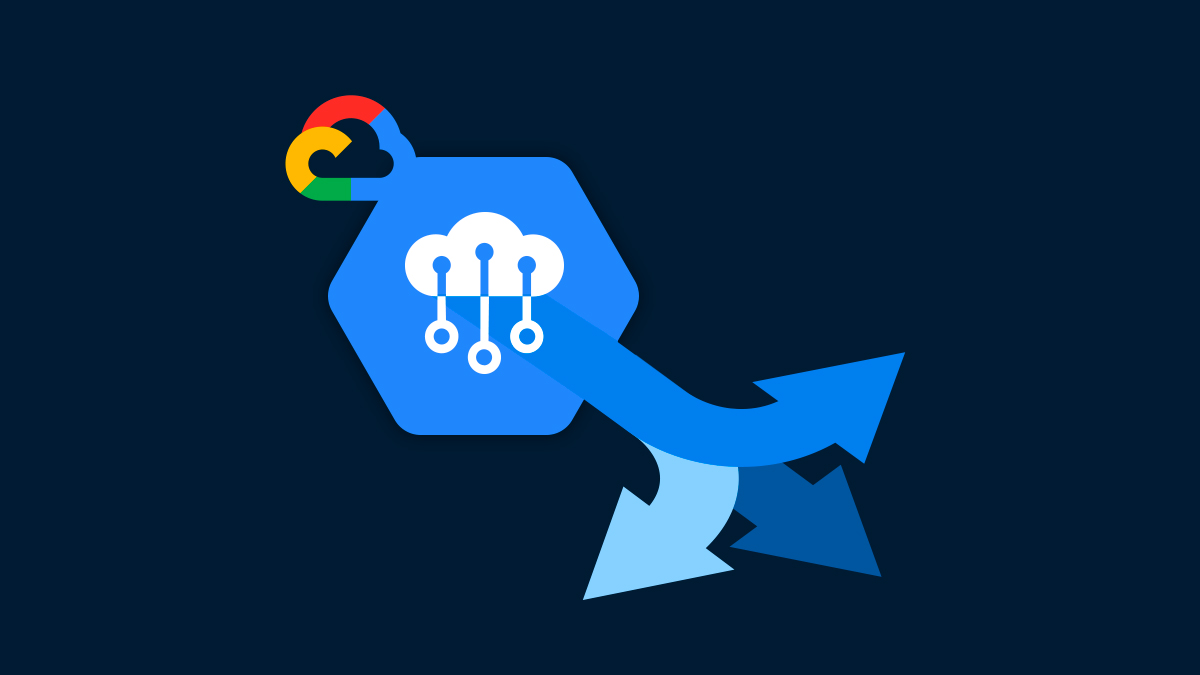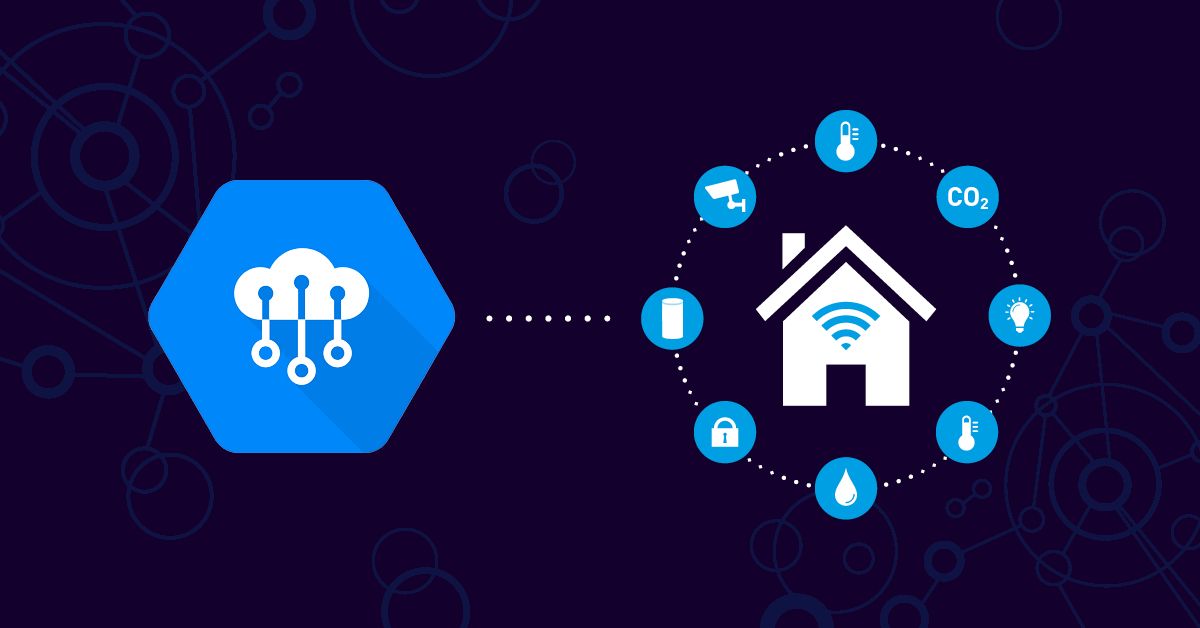Introduction
Big data has become a buzzword in today’s digital landscape, and its impact on various industries, including technology and marketing, cannot be overlooked. Among the companies harnessing the power of big data, Google stands out as one of the pioneers in utilizing this vast collection of information to improve its services and offerings.
As the world’s leading search engine, Google has access to an enormous amount of data generated by billions of users. From search queries and website analytics to social media interactions and location data, Google has accumulated an extensive database of information. But how does Google use this immense resource to enhance its functionalities and deliver an unparalleled user experience?
In this article, we will explore how Google collects, stores, and processes big data, as well as how it leverages it to improve search results, online advertising, and user experience. Additionally, we will delve into how Google analyzes big data for its mapping services and the role of machine learning in their data-driven decision-making processes.
By shedding light on Google’s big data initiatives, we can gain a deeper understanding of the company’s commitment to innovation and its ability to harness the power of data to drive its success.
What is Big Data?
Big data refers to the massive volume of complex and diverse data that is generated at an unprecedented rate from various sources, such as social media, sensors, online transactions, and more. The term “big” in big data doesn’t just refer to the size of the data, but also its velocity, variety, and veracity.
Velocity refers to the speed at which data is generated, whether it’s real-time streaming data or batched data collected over time. Variety refers to the different types and formats of data, including text, images, videos, and structured or unstructured data. Veracity relates to the quality and accuracy of the data, as it may contain errors, inconsistencies, or biases.
Big data holds immense potential as it can provide valuable insights and patterns that can lead to data-driven decision-making and business optimizations. However, the challenge lies in effectively collecting, storing, processing, analyzing, and interpreting this large volume of data.
Traditional data management tools and approaches are often inadequate for handling big data due to its sheer scale and complexity. This is where specialized technologies, such as distributed storage systems, parallel processing, and machine learning algorithms, come into play. These technologies enable organizations to extract meaningful information, uncover trends, and make predictions from the vast amount of data.
Big data has revolutionized the way organizations operate across industries, including healthcare, finance, retail, and advertising. Companies now have the ability to gain deeper customer insights, optimize operations, personalize user experiences, and enhance decision-making processes.
For Google, big data plays a crucial role in efficiently indexing and ranking web pages, understanding user intent, and delivering relevant search results. It also fuels the sophisticated algorithms that power Google’s online advertising platforms, allowing advertisers to target specific audiences and measure campaign effectiveness.
Now that we have a basic understanding of what big data is, let’s delve into how Google collects and utilizes this massive amount of data.
How Does Google Collect Big Data?
Google collects big data through various channels and sources, taking advantage of its widespread products and services to gather a vast array of information. Here are some key methods by which Google collects big data:
- Web Crawling: Google’s search engine crawls web pages continuously, indexing and analyzing the content available on the internet. This process provides Google with a comprehensive database of web pages, allowing it to offer relevant search results to its users.
- Google Analytics: Website owners and administrators can integrate Google Analytics into their sites. This tool allows them to track and analyze visitor data, including demographics, behavior, and interactions. Google Analytics provides valuable insights to website owners and aggregates data for Google’s big data analytics.
- Google Search Console: Webmasters can use Google Search Console to monitor their website’s performance in Google’s search results. This tool provides data on search queries, crawl errors, and other valuable website information, helping Google gather data on website performance and user behavior.
- Location Data: Google collects location data from users who have enabled location services on their devices. This data helps power services like Google Maps and allows Google to deliver location-specific search results and advertisements.
- Google Chrome and Other Apps: Google collects data through its web browser, Google Chrome, and other mobile apps. This data includes browser history, app usage, and user interactions, which allows Google to personalize search results and provide targeted advertising.
- Google Ads: Google’s online advertising platform collects data from advertisers and users. Advertisers provide targeting parameters, such as demographics and interests, while users’ interactions with ads generate data that helps improve ad relevancy.
- Social Media: Google has access to social media data through various channels, including its social media platform Google+. Although Google+ has been shut down, Google still uses data from other social media sources to understand user behavior and preferences.
By leveraging these multiple channels, Google is able to accumulate a massive amount of data on user behavior, preferences, and interactions. This data forms the foundation for Google’s big data analytics and drives the company’s ability to provide valuable services and enhance user experiences.
How Does Google Store and Process Big Data?
Storing and processing big data at Google requires a robust infrastructure and sophisticated technologies. Google has developed its own systems and tools to efficiently handle the massive volume of data it collects. Here’s an overview of how Google stores and processes big data:
Storage: Google utilizes distributed storage systems, known as Google File System (GFS) and Colossus, to store its vast amount of data. These systems distribute data across multiple servers, ensuring redundancy and fault tolerance. The data is stored in a distributed file system that allows for efficient retrieval and processing.
Data Processing: Google employs a variety of technologies and frameworks to process big data. The most notable one is MapReduce, a programming model and software framework used for parallel data processing. MapReduce divides the processing tasks into smaller chunks, which are distributed across a cluster of machines. This enables parallel processing and efficient analysis of large datasets.
Apache Hadoop: Google has been instrumental in the development of Apache Hadoop, an open-source framework inspired by MapReduce. Google’s experience with MapReduce influenced the creation of this powerful tool, which allows for distributed processing of big data on clusters of commodity hardware.
BigQuery: Google’s BigQuery is a fully managed, serverless data warehouse that enables businesses to analyze large datasets quickly. BigQuery uses a columnar storage format and allows for SQL-like queries, making it easy to process and analyze big data without the need for complex infrastructure setup.
TensorFlow: TensorFlow is an open-source machine learning library developed by Google. It is highly scalable and designed to process and analyze large amounts of data. TensorFlow enables Google to leverage big data in training and deploying machine learning models across various applications and services.
Data Security and Privacy: Google recognizes the importance of data security and privacy. It implements robust security measures to protect user data and follows strict privacy policies. User data is anonymized and aggregated to ensure individual privacy while still allowing for data analysis and pattern recognition.
By utilizing these advanced storage and processing technologies, Google is able to handle and analyze massive amounts of data quickly and efficiently. This enables the company to derive valuable insights, improve its services, and deliver a seamless user experience.
Big Data Applications at Google
Google leverages big data across various applications to enhance its services and provide a personalized user experience. Here are some of the key areas where Google applies big data:
- Search Engine Optimization (SEO): Google’s search engine utilizes big data analytics to continuously improve its search rankings and deliver relevant results. By analyzing user behavior, search trends, and website content, Google refines its algorithms to provide better search results and address the evolving needs of users.
- Online Advertising: Big data plays a crucial role in Google’s online advertising platforms, including Google Ads. By analyzing user behavior, demographics, and preferences, Google can deliver targeted advertisements to specific audiences. This improves the effectiveness of advertising campaigns and helps advertisers reach their desired target market.
- Google Maps: Google Maps utilizes big data to provide accurate and up-to-date mapping information. By analyzing location data, real-time traffic updates, and user feedback, Google Maps offers comprehensive navigation services, including optimal route suggestions, real-time traffic information, and nearby recommendations.
- Google Translate: Big data is essential for improving the accuracy and quality of Google Translate, Google’s translation service. By analyzing vast amounts of translated documents and user feedback, Google continuously refines its translation algorithms, resulting in more accurate and natural language translations.
- Google Assistant: Google Assistant, the company’s virtual assistant, uses big data to understand user queries and provide relevant responses. By analyzing user interactions, sentiment analysis, and context, Google Assistant delivers personalized and dynamic assistance to users across various devices.
- Google Photos: Big data powers Google Photos, allowing users to easily search and organize their digital photo collection. By analyzing image content, metadata, and user behavior, Google Photos provides features like automatic tagging, search by subject or location, and personalized photo recommendations.
- Machine Learning and AI: Google utilizes big data to train and enhance its machine learning algorithms. By feeding large amounts of data into deep learning models, Google develops AI systems with the ability to understand and process complex patterns, resulting in improved accuracy and efficiency across various applications.
These are just a few examples of how Google applies big data to enhance its services and deliver a seamless user experience. The company’s commitment to leveraging data-driven insights and cutting-edge technologies allows it to continuously innovate and adapt to the evolving needs of its users.
Improving Search Results with Big Data
One of the most significant applications of big data at Google is in improving search results. Google’s search engine is constantly evolving to provide users with the most relevant and accurate information, and big data plays a crucial role in this process.
Google collects and analyzes vast amounts of data to refine its search algorithms and understand user intent. By analyzing user behavior, search patterns, and website content, Google can deliver more accurate and personalized search results.
Here’s how big data improves search results at Google:
- Ranking Algorithm: Google’s ranking algorithm, which determines the order of search results, considers a range of factors. Big data analysis allows Google to understand the relevance and authority of web pages by analyzing data such as backlinks, page speed, user engagement, and more. This analysis results in more accurate rankings and helps users find the most relevant information.
- Understanding User Intent: Big data helps Google understand user intent behind search queries. By analyzing past search queries, click-through rates, and user interactions, Google can infer the context and purpose of a search. This enables the search engine to provide more accurate results, even for ambiguous or incomplete queries.
- Real-time Updates: Big data enables Google to keep its search results updated in real-time. By analyzing trending topics, news articles, social media feeds, and other data sources, Google can quickly adjust its search results to reflect the latest information. This ensures that users receive up-to-date and relevant results, especially for time-sensitive queries.
- Personalization: Big data analysis allows Google to personalize search results based on user preferences and behavior. By analyzing a user’s search history, location data, and previous interactions, Google can deliver search results that are tailored to the individual’s interests and needs. This enhances the search experience and helps users find information more efficiently.
- Enhanced Search Features: Big data helps Google enhance its search features, such as featured snippets, knowledge graphs, and related searches. By analyzing data from various sources, including web pages, structured databases, and user-generated content, Google can generate rich and informative search results that go beyond traditional organic listings.
By harnessing the power of big data, Google continually improves its search engine to deliver more accurate, relevant, and personalized results. This focus on data-driven innovation ensures that users can find the information they need quickly and efficiently, enhancing their overall search experience.
Enhancing Online Advertising with Big Data
Big data plays a pivotal role in enhancing online advertising at Google. With its vast collection of user data and powerful analytics capabilities, Google leverages big data to deliver targeted and effective online advertising campaigns. Here’s how big data enhances online advertising at Google:
- Targeted Audience Segmentation: Google utilizes big data analytics to segment audiences based on demographics, interests, browsing behavior, and more. By analyzing vast amounts of data, Google can identify specific target audiences for advertisers, allowing them to deliver personalized messages to the right people, at the right time.
- Real-time Bidding: Big data enables Google to optimize its ad bidding process in real-time. By analyzing data on user behavior, ad performance, and market trends, Google can adjust bidding strategies to ensure advertisers get the most value for their advertising spend. Real-time bidding helps deliver relevant ads and maximizes ROI for advertisers.
- Ad Placement: Google’s big data analysis allows for intelligent ad placement. By analyzing factors such as website content, user behavior, and contextual relevance, Google can place ads in the most appropriate locations, increasing the chances of engagement and conversions. This ensures that advertisers’ messages are delivered on relevant platforms to their target audience.
- Ad Performance Optimization: Big data analytics enables Google to continuously improve ad performance. By analyzing data on ad clicks, impressions, conversions, and user engagement, Google can identify trends and patterns, and optimize ad campaigns accordingly. This ensures that advertisers achieve their desired outcomes and maximize their return on investment.
- Audience Insights and Measurement: Google’s big data capabilities provide advertisers with valuable audience insights and measurement metrics. By analyzing data on ad interactions, conversions, and customer journey, advertisers can gain in-depth insights into their target audience, refine their targeting strategies, and measure the effectiveness of their advertising campaigns.
- Ad Fraud Detection: Big data analysis helps Google detect and prevent ad fraud. By analyzing various data points and patterns, such as invalid clicks, suspicious traffic sources, and abnormal behavior, Google can identify and filter out fraudulent activities, ensuring that advertisers’ budgets are spent on genuine ad engagements.
By leveraging big data, Google enhances online advertising by delivering precise targeting, optimizing ad performance, and providing advertisers with valuable insights and measurement tools. This data-driven approach ensures that advertisers can reach their intended audience effectively and achieve their advertising goals in a cost-efficient manner.
Big Data and Personalized User Experience
Big data plays a significant role in providing a personalized user experience at Google. By analyzing vast amounts of user data, preferences, and behavior, Google utilizes big data to deliver tailored services and enhance user satisfaction. Here’s how big data enables a personalized user experience at Google:
- Search Personalization: Google utilizes big data to personalize search results based on individual user preferences and behavior. By analyzing a user’s search history, location, and previous interactions, Google can deliver search results that are tailored to their specific interests and needs. This helps users find information more efficiently and enhances their overall search experience.
- Content Recommendations: Big data analysis assists Google in providing personalized content recommendations. By analyzing a user’s browsing history, past interactions, and preferences, Google can suggest relevant articles, videos, and other content that align with their interests. These personalized recommendations enhance user engagement and make their online experience more enjoyable and valuable.
- Personalized Advertising: Big data enables Google to deliver targeted and personalized advertising. By analyzing user demographics, interests, and browsing history, Google can show ads that are highly relevant to individual users. This enhances the overall ad experience by displaying products and services that align with users’ interests and needs.
- Personalized Product Experiences: Google utilizes big data to personalize product experiences across its various services. For example, Google Maps leverages big data to recommend restaurants, attractions, and routes based on a user’s location and preferences. Google Assistant uses big data to understand user queries and deliver personalized responses. These personalized experiences enhance user satisfaction and make interactions with Google’s products more intuitive and useful.
- Recommendation Systems: Big data analysis enables Google to build robust recommendation systems that suggest relevant content, products, and services. These recommendation systems utilize algorithms that examine user behavior, preferences, and patterns to provide personalized recommendations. This enhances user engagement by presenting them with content that is likely to resonate with their interests and needs.
- Continuous Improvement: Big data analytics plays a crucial role in continuously improving Google’s services and user experience. Through analysis of user feedback, interaction data, and evolving trends, Google can identify areas for improvement and make data-driven enhancements. This agile approach ensures that Google remains responsive to user needs and delivers an increasingly personalized and satisfying experience over time.
By leveraging big data, Google creates a personalized user experience that is tailored to individual preferences, interests, and needs. This data-driven approach enhances user satisfaction, engagement, and loyalty, positioning Google as a leader in providing personalized services and products.
Google Maps and Big Data Analysis
Google Maps is a prime example of how big data analysis is utilized to provide accurate mapping information and a seamless navigation experience. By harnessing the power of big data, Google can continuously update maps, offer real-time traffic information, and provide personalized recommendations. Here’s how Google Maps leverages big data analysis:
- Real-time Traffic Updates: Google Maps collects and analyzes real-time data from various sources, including GPS data from mobile devices and sensors installed in vehicles. By processing this vast amount of data, Google Maps can accurately detect traffic congestion, accidents, and road closures in real-time. This information allows users to choose the best routes and avoid heavy traffic.
- Location Data Analysis: Google Maps utilizes big data analysis to understand location patterns and trends. By analyzing large datasets of anonymous location data, Google Maps can determine popular destinations, peak travel times, and the availability of public transportation options. This helps users better navigate and plan their journeys.
- Place Recommendations: Big data analysis enables Google Maps to suggest relevant places of interest to users. By analyzing user location data, search history, and ratings, Google Maps can recommend restaurants, attractions, and other points of interest that align with individual preferences. This personalized recommendation feature enhances the user experience and provides valuable insights for businesses.
- Street View Imagery: Google Maps utilizes big data to capture and update Street View imagery. By collecting vast amounts of visual data from vehicles equipped with specialized cameras, Google creates immersive 360-degree views of streets around the world. This data enables users to explore locations virtually and facilitates better orientation and navigation.
- Crowdsourced Data: Google Maps incorporates crowdsourced data from its users to improve accuracy and provide up-to-date information. This data includes user-submitted reviews, ratings, photos, and correction reports. By crowdsourcing data, Google Maps benefits from a collective intelligence that ensures the accuracy and freshness of its mapping information.
- Indoor Mapping: Big data analysis enables Google Maps to provide indoor maps for shopping centers, airports, museums, and other large venues. By analyzing indoor plans and collecting data from user contributions, Google Maps can offer detailed floor plans, navigation assistance, and indoor point-of-interest information. This enhances the user experience and simplifies navigation in complex indoor spaces.
The utilization of big data analysis in Google Maps ensures that users have access to accurate, updated, and personalized mapping information. By incorporating real-time data, location analysis, and crowdsourced information, Google Maps delivers a comprehensive navigation and exploration experience that continues to evolve and improve over time.
Big Data and Machine Learning at Google
Big data and machine learning are closely intertwined at Google, with big data serving as the fuel for training and improving machine learning models. Google harnesses the power of big data to train its machine learning algorithms and develop cutting-edge AI technologies. Here’s how big data and machine learning work together at Google:
- Data Collection and Preprocessing: Google collects massive amounts of data from various sources, including user interactions, web content, and sensor data. This data serves as the foundation for training machine learning models. Before training, the data is preprocessed to clean, transform, and prepare it for analysis.
- Training Machine Learning Models: Big data is crucial for training machine learning models at Google. By feeding the large datasets into deep neural networks, Google trains models to recognize patterns, make predictions, and perform various tasks. The vast amount of data helps the models learn complex relationships and generalize their understanding.
- Improving Models with Reinforcement Learning: Google uses big data to refine machine learning models through reinforcement learning techniques. By exposing models to large amounts of data and receiving feedback on their predictions, the models continually adjust their parameters to optimize their performance. This iterative process helps models improve over time.
- Enhancing Natural Language Processing: Big data analysis aids in the development of Google’s natural language processing (NLP) capabilities. By analyzing large volumes of text data, including website content and user-generated content, Google trains machine learning models to understand and generate human-like language. This enables advancements in voice assistants, translation services, and search understanding.
- Image and Video Analysis: Big data plays a vital role in training machine learning models for image and video analysis at Google. By analyzing massive datasets consisting of images and videos, machine learning models can learn to recognize objects, detect faces, perform image classification, and even understand complex scenes. This enhances Google’s visual search capabilities and powers features like Google Lens.
- Personalization and Recommendation Systems: Big data and machine learning enable Google to provide personalized recommendations to its users. By analyzing user behavior, preferences, and interactions with a vast amount of data, machine learning models can deliver tailored recommendations for content, products, and services. This enhances the user experience and helps users discover relevant information and offerings.
- Improving Speech and Gesture Recognition: Big data analysis contributes to advancements in speech and gesture recognition at Google. By analyzing large datasets of audio and video recordings, machine learning models can learn to recognize speech patterns, accents, and gestures. This drives innovations in voice commands, virtual assistants, and gesture-based interactions.
Big data provides the necessary information and training material for Google’s machine learning models, allowing them to deliver intelligent and predictive functionalities across a range of applications and services. By leveraging big data analytics, Google continues to push the capabilities of machine learning and enhance user experiences in innovative ways.
Challenges and Concerns of Using Big Data at Google
While big data offers numerous benefits, its utilization at Google also poses certain challenges and concerns. As Google collects and analyzes vast amounts of data, it must address the following issues:
- Data Security and Privacy: With the collection of extensive user data, ensuring data security and protecting user privacy is of utmost importance. Google employs robust security measures to safeguard user data, adhering to stringent privacy policies. However, concerns regarding data breaches, unauthorized access, and the potential misuse of personal information remain, highlighting the ongoing need for vigilant data protection.
- Data Quality and Accuracy: Managing big data involves dealing with a diverse range of sources and formats, which can lead to inconsistencies, errors, and data quality issues. Google invests significant effort in data validation and cleansing processes to ensure data accuracy. However, ensuring the quality of such massive datasets remains an ongoing challenge.
- Data Storage and Processing Complexity: The sheer scale of big data requires sophisticated infrastructure and distributed computing systems. Google has developed its own systems, like the Google File System (GFS) and Colossus, to store and process big data efficiently. However, managing and maintaining these complex systems can be resource-intensive and challenging.
- Ethical Considerations and Bias: Big data analysis may introduce bias or reflect existing biases present in the data itself. Google is committed to addressing biases in its algorithms and taking steps to minimize unfair discrimination. However, it remains crucial to continually assess and mitigate biases to ensure fairness and inclusivity in the results and recommendations generated through big data analytics.
- Regulatory Compliance: Google must navigate a complex landscape of data protection and privacy regulations worldwide. Compliance with varying regulations, such as the General Data Protection Regulation (GDPR), requires ongoing monitoring and adaptation of data management practices. Google works diligently to adhere to these regulations and maintain transparent data practices.
- Data Governance and Transparency: With the vast amount of data at its disposal, Google must ensure proper data governance and transparency. This includes defining clear policies and guidelines for data usage, providing users with transparency about the data collected and how it’s utilized, and fostering trust through open communication.
Addressing these challenges and concerns is essential for Google to maintain user trust, uphold ethical standards, and comply with regulatory requirements. By continuously evaluating and improving data management practices, Google aims to mitigate these challenges and ensure that the benefits of big data can be leveraged responsibly and ethically.
Conclusion
Big data plays a vital role in the success of Google, empowering the company to deliver innovative products and services. Through the utilization of massive amounts of data and advanced analytics techniques, Google is able to improve search results, enhance online advertising, personalize user experiences, revolutionize mapping services, and drive advancements in machine learning.
Google’s ability to collect, store, and process big data is underpinned by robust infrastructure, such as distributed storage systems and parallel processing technologies. These enable Google to handle the immense volume and complexity of data generated by billions of users.
While big data brings numerous benefits, its use at Google also raises challenges and concerns. These include data security and privacy, ensuring data quality and accuracy, managing complex storage and processing systems, addressing ethical considerations and biases, complying with regulatory requirements, and fostering data governance and transparency.
Despite these challenges, Google continues to innovate and improve its data management practices to harness the potential of big data. By prioritizing user privacy, investing in sophisticated technologies, and actively addressing biases, Google aims to ensure that big data is used responsibly and ethically.
Looking forward, big data will continue to play a pivotal role in Google’s operations, enabling the company to deliver better search experiences, personalized services, and cutting-edge AI technologies. As big data analytics evolve, Google will continue to leverage this vast resource to enhance its offerings while maintaining a commitment to user trust and data protection.
In conclusion, Google’s use of big data is a testament to its dedication to utilizing data-driven insights to improve its products and services. The ever-growing ability to collect, store, and analyze big data drives innovation and enables Google to enhance user experiences across various platforms.

























